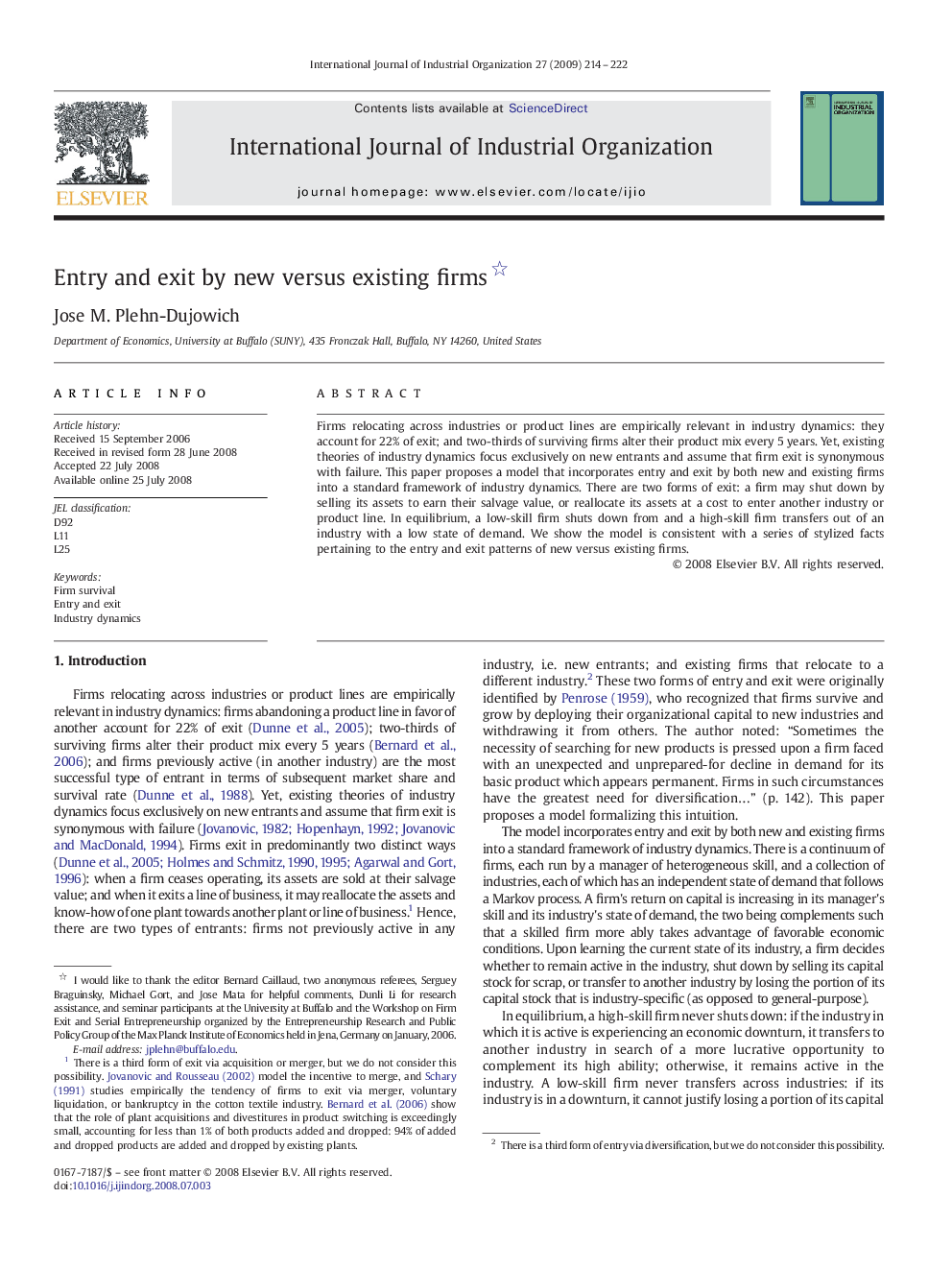| Article ID | Journal | Published Year | Pages | File Type |
|---|---|---|---|---|
| 5078636 | International Journal of Industrial Organization | 2009 | 9 Pages |
Abstract
Firms relocating across industries or product lines are empirically relevant in industry dynamics: they account for 22% of exit; and two-thirds of surviving firms alter their product mix every 5Â years. Yet, existing theories of industry dynamics focus exclusively on new entrants and assume that firm exit is synonymous with failure. This paper proposes a model that incorporates entry and exit by both new and existing firms into a standard framework of industry dynamics. There are two forms of exit: a firm may shut down by selling its assets to earn their salvage value, or reallocate its assets at a cost to enter another industry or product line. In equilibrium, a low-skill firm shuts down from and a high-skill firm transfers out of an industry with a low state of demand. We show the model is consistent with a series of stylized facts pertaining to the entry and exit patterns of new versus existing firms.
Related Topics
Social Sciences and Humanities
Economics, Econometrics and Finance
Economics and Econometrics
Authors
Jose M. Plehn-Dujowich,
